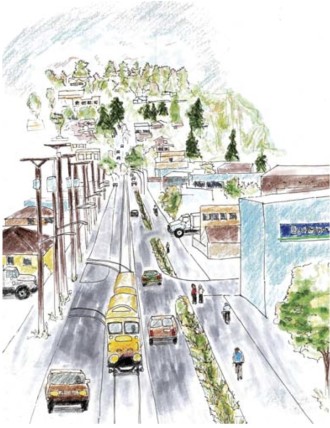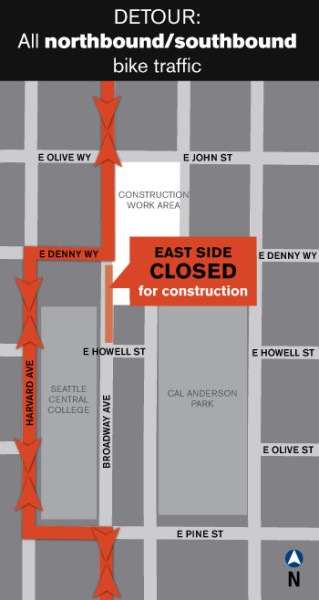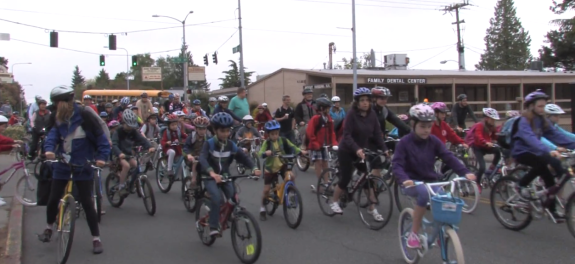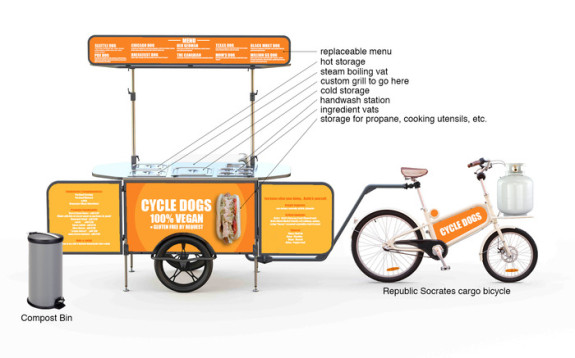
After well more than a decade and dumping cement trucks full of private and public money into design and legal battles over the Ballard Missing Link of the Burke-Gilman Trail, I can understand why people’s ears might perk up when they hear that there could be a Plan B. The idea certainly captured the imagination of Jonathan Martin, a member of the Seattle Times Editorial Board and a consistent supporter of bold bicycle projects in Seattle. It also caught Councilmember Sally Bagshaw’s attention.
But the group’s “plan” for protected bike lanes on Leary and Market is really just a smokescreen that will not address current safety concerns or complete the trail. It will do nothing for safety of people walking (or jogging or in wheelchairs or pushing strollers) and cannot be considered a reasonable alternative to actually completing the trail.
First, some background for those not familiar with the issue. Back in 2003 around the time the Bush administration was presenting their “evidence” of WMDs in Iraq to justify a war there, the Seattle City Council voted to complete the extraordinarily popular Burke-Gilman Trail by linking the dead end at Fred Meyer to the dead end at the Ballard Locks, thus providing a comfortable biking and walking link from Golden Gardens all the way to the Sammamish River Trail in Bothell (with trail links to Redmond and beyond).

The unfriendly industrial and commercial streets connecting these two endpoints have been the scene of untold numbers of bike crashes and injuries. It’s safe to say that, when you include unreported crashes, they easily number in the thousands. It’s so common to crash on the Missing Link that there’s even a sticker for people who have done it.
But a crew of Ballard businesses calling themselves the Ballard Appellants lawyered up and have used every possible legal hold to delay the trail’s completion. As a result, people continue to crash and get hurt on the Missing Link. And since the city has still not begun work on a pricey and time-consuming Environmental Impact Statement (“An EIS for a biking and walking trail?” you ask incredulously. Yes, and EIS for a trail.), we aren’t gonna see the final document until 2016. The Ballard Appellants have threatened to sue again if they can find a chance and will do whatever they can to push it back even further.
If there was a time when the Appellants were open to actual and real talks about trail design, it ended sometime during the Bush Administration (and before this blog even existed). In recent memory, it’s been all about delaying the project at any cost and for whatever reason finds traction (in 2012 they threw 19 reasons to delay the project at the judge, who tossed out 18 of them).
Completing the trail is a popular idea and has been politically decided and funded for so long, it’s hard for me to even get up the will to write yet another post explaining why we should complete the Missing Link (this is post number 28, for those keeping track at home). (more…)











